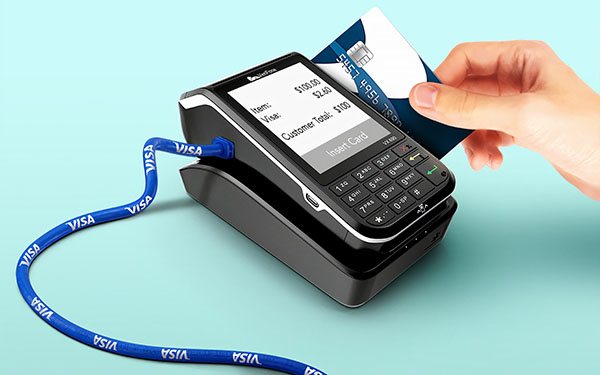
Social Evolution to Business Revolution: The History of Credit Cards
More than 70% of adults now own at least one credit card, adding up to around 2.8 billion active cards worldwide. And for frequent business travelers, it’s an easy way to purchase anything from a plane ticket to a mid-morning latte.
In this two-part series, we will explore the birth and evolution of the modern-day credit card and how it has become more than just a means to purchase goods: It has become a digital tool for finance teams in businesses around the world. We will also uncover how credit cards were adopted by businesses throughout the 1970s in the form of corporate cards.
To begin, here’s a look back at the journey of the credit card:
1790BC: Ancient forms of credit
While the credit card is a relatively new innovation, the idea of credit goes way back to modern finance as early as 1790BC. Sophisticated examples of credit systems can be found within ancient Babylonian and Romans societies, featuring rules for loans, repayments, and interest on unpaid amounts - much like the finances of today.
Records indicate that interest rates at the time were as high as 20% for temple loans and as low as 6.25% for silver loans. Armstrong Economics gives a glimpse of the Ancient Economy spanning from 3,000 B.C. to 500 A.D.
1880s: Easy access to credit for the working-class
It was not until the 1880s, where the true origins of the modern credit card began to take form. In the UK, the company Provident Financial was formed to provide working-class people in West Yorkshire with easier access to credit.
To do this, they provided patrons with vouchers that could be used to buy clothing and other small necessities. Repayments were made monthly from doorstep collectors, coining the company with the term “doorstep lenders”.
It was also around this time that the first recorded use of the term ‘credit card” appeared in the modern English language. In 1887 the word was first used 11 times in a Utopian novel by Edward Bellamy called ‘Looking Backward’. The main character of the story was given a card in which he could pay for any item in a store and then be given a receipt to show proof of the transaction. This predicted the future use of modern credit cards and the importance of retail stores.
1930s: Credit goes metal
The next stage of the credit card’s evolution came with the use of metal. Coincidentally, metal cards recently saw a resurgence in popularity over the last five years with American Express and Apple Card providing metal cards to customers.
In 1928, the US company Charga-Plate Group, Inc. New York, released the ‘Charga-Plate’ system. This method used a small sheet rectangular metal - similar to a military-style dog tag - to record a customer’s information, like name, city, and state. This information would then be processed at a later time.
‘Charga-Plate’ cards were issued in increasing numbers at the turn of the 1930s. With these new cards came the first usages of customer signatures, which were displayed on the back of the card inside of a paper holder. An ink sheet was used to record the information whenever a purchase was made.
In 1936 another business travel innovation was added by American Airlines. They devised the first-ever Air Travel Card. The card used a numbering system that could track both the flight vendor and the individual customer. This allowed them to streamline accounting while providing flight discount incentives.

The system was soon adopted by other US airline companies. It became the first internationally valid airline card in 1948 and is still used to this day on Universal Air Travel Plan (UATP) cards.
1940s: The credit card is born
In 1949, the birth of the modern-day credit card began on a date night in New York City. Businessman Frank McNamara realized he left his wallet at home while dining at a restaurant with his wife. In order to pay for their meal, his wife had to cover the tab - an incident that could be embarrassing for people of his status.
It was this incident that gave Frank an idea: a multipurpose credit card. The following year he launched the Diner’s Club payment card made entirely from cardboard.
Over 10,000 cards were issued to the business elite in New York City, linking those who own the card to a high level of social status. The card was able to be used by over 25 restaurants and two five-star hotels. Today the card is accepted at over 38 million MasterCard merchant locations worldwide.
1960s: Banks take it to the next level
US banks noticed the success of the Diner’s Card and became eager to release a version of their own. The first international, US bank-commissioned credit card came in 1966 from the company BankAmericard. It was initially known as the ‘travel and expense’ (T&E) card, By June of that year, over 60,000 merchants in the US accepted the BankAmericard. BankAmericard would eventually become VISA to reflect its global endeavors.
It was also in 1966 that a group of banks in California came together to form the first national credit card system: the Interbank Card Association. After two years of practicing business with banks in Europe, Mexico, and Japan, Interbank became MasterCard to reflect the new relationship.
The increasing involvement of US banks helped to rapidly expand the credit network, with ‘buy now, pay later’ purchases eventually becoming global.
In the UK, 1966 also saw the first credit card launch outside of the US from Barclaycard. Introduced as a charge card. Charge cards were designed for individuals who had the means to pay off their debt in its entirety every month as opposed to repaying in small amounts. The charge card soon became a form of revolving credit, mirroring the system of credit cards.
1970s: Paying with plastic and new rules
With credit cards becoming more and more popular over the years, the 1970s saw cardboard cards being replaced with more durable plastic cards.
In 1970, IBM introduced the magnetic strip as an attempt to battle increasing cases of credit card fraud. The magnetic strip allowed for a customer's financial details to be instantly and securely transferred across to the bank or vendor. In the latter half of the decade, the Diner’s Club launched a range of corporate credit cards - though it wasn’t until the late 90’s that usage began to significantly increase.
In addition, the 1970s gave way to a slew of shifting legal framework for consumer credit:
1970: The Fair Credit Reporting Act was enacted to enforce strict guidelines on credit reporting companies. Under this law, credit reporting companies had to fix any errors on consumers' credit reports to keep the playing field even.
1974: The Equal Credit Opportunity Act was enacted to prevent companies from issuing credit cards from discriminating based on a person's gender, marital status, race, color, and religion among other factors. Up until this point, single women were not allowed to open up a line of credit without a husband to cosign on the account.
1974: The Fair Credit Billing Act was signed to provide cardholders with guidelines on when and how to dispute incorrect charges on their accounts - adding another layer of security. The act also established requirements for investigations and corrections by card issuers.
1977: The Fair Debt Collection Practices Act was established to put limitations on how debt collectors could contact consumers. Prior to this act, harassment was a common practice among debt collectors to get consumers to pay their debts.
The speed of the new style credit card helped make the card become an essential consumer tool, especially for business travelers. With this came changing attitudes overspending, with increasing concerns about the levels of personal debt.
In the latter half of the decade, the Diner’s Club launched a range of corporate credit cards, though late 90’s that usage began to see a major increase. Corporate cards offered features that were more suitable for businesses as a whole rather than personal use. With a corporate card, employees of a business are issued a card regardless of their credit history, rendering that person virtually not liable for business debts.
1980s: Rewards programs take shape
Technological advancements of credit cards remained stagnant throughout the ’80s, but other forms of enticing new customers took shape.
Credit card companies were trying to find ways to hook new customers and get them to use their cards more frequently.
In 1984, the Diner’s Club introduced its own “Club Rewards” program - giving cardholders points for every dollar spent and access to exclusive travel offers. Citibank teamed up with American Airlines for their frequent flyers program just a few years later.
In 1986, Discover Financial Services aired their first SuperBowl commercial announcing their cash-back offer. The concept of cardholders being paid a lump sum of money at the end of the year based on the total amount of charges placed on the card was entirely new.
1990s: Corporate cards increase in popularity
While corporate cards first emerged in the late 1970s, it took nearly two decades before they became widely adopted. In 1998, 37% of small businesses reported using a corporate card and jumped to 67% in less than ten years.
Corporate cards offered small businesses with easy access to funds that could jumpstart their growth - business technology, shipping tools, office supplies, and travel. In addition, payment terms for corporate cards can be tailored to each specific business, making repayment options easier for businesses with higher revenues than others.
2000s: Credit cards enter the digital age
The magnetic strip, originally introduced by IBM in the 70s and which has since been widely adopted, provided an extremely reliable way to store card information, but it soon became a threat to the security of personal information. Digital technology has seen a move to ‘smart cards,’ or EMV chips, which use encrypted data to help reduce the risks of fraud.

EMV is named after the initials of the three companies who created it, Europay, Mastercard, and Visa. It moved the credit card from the era of ‘swiping’ to a new world of ‘dipping’. This now makes credit card transactions completely contactless.
2010s: Where we are now - and beyond
With advancements in technology and the ubiquitousness of smartphones, credit cards have moved towards digital payments. Touchless payments and smartphones have removed the need for a physical card but the added convenience is balanced against a confusing array of different systems, apps, and technologies.
So what’s next for the credit cards and how have the recent advancements in credit card technology revolutionized the way that companies manage their business spend? Stay tuned for part two to find out.

